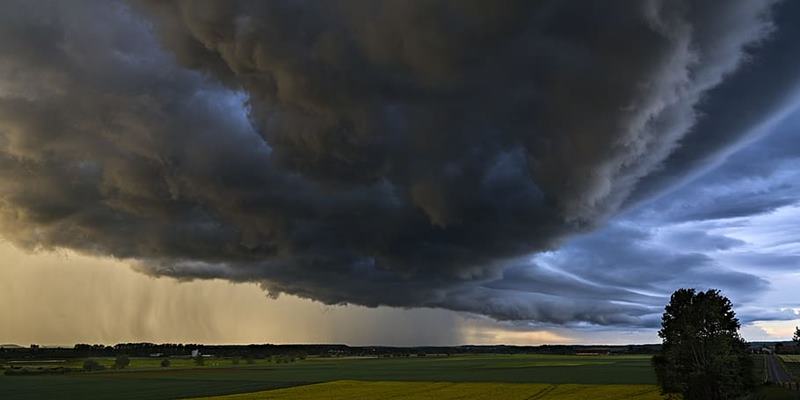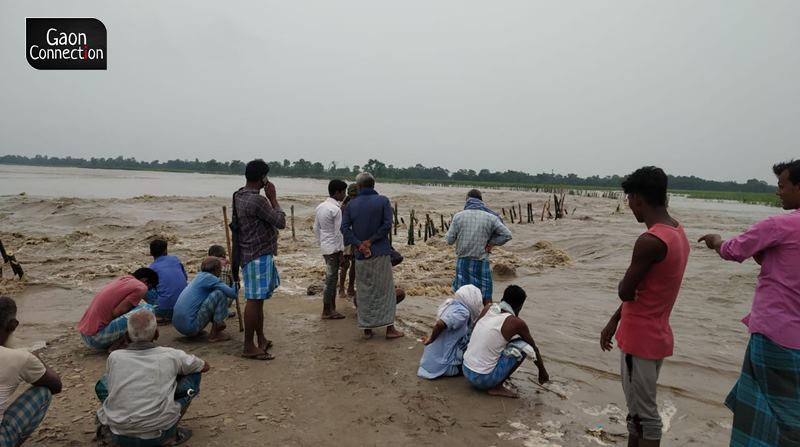Explained: How air pollution affects monsoon rains in India
The adverse effects of air pollution on human health are well-established. Now, scientists agree that pollutants interfere with the differential heating of land and sea and reduce the country-wide rainfall by at least 10 per cent and also cause extreme weather events like unusually heavy rainfall. More details here.


Air pollution can increase, decrease, or redistribute rainfall based on differences in how they interact with radiation and clouds.
The destructive floods in Madhya Pradesh and Uttar Pradesh and the ongoing drought in Odisha and Western Rajasthan could possibly be a result of the rising air pollution as scientists have come out to state that the pollutants in the atmosphere can cause intense rainfall leading to floods as well as decreased precipitation causing droughts.
According to a briefing compiled by Climate Trends — a New Delhi based strategic communication group, scientists have stated that rising levels of air pollution adversely impacts as the concentration of aerosols increases, it leads to warming of the atmosphere but simultaneously cooling of the land surface.
“Any kind of change in differential heating of land and ocean will impact the wind pattern. This change in thermal profile in the atmosphere has an influence on Monsoon circulation, eventually leading to impact on precipitation as well as its performance,” the brief mentioned.
Also Read: Large-scale deficient monsoon rainfall across Odisha triggers fear of drought

How do air pollutants affect the monsoon?
The air pollutants block the sun rays and interfere with the heating of the ground. Also, these particles decrease the heat received by the ground as they absorb a fraction of the heat energy within themselves.
Dilip Ganguly, Associate Professor, Centre for Atmospheric Sciences, Indian Institute of Technology (IIT) Delhi, was quoted in the briefing:
“Air pollution does not allow the landmass to warm up to the required levels. Due to the presence of pollutants, heating of land takes place at a slower rate. For instance, the required surface temperature is 40°C (degrees celsius), while the presence of air pollution will result in restricting temperature up to 38°C or 39°C.”
Also Read: How ‘uncontrolled, unplanned’ irrigation in northern India affects monsoon rainfall?
Air pollution can also intensify or disrupt monsoon rainfall
V Vinoj, Assistant Professor, School of Earth Ocean and Climate Sciences, Indian Institute of Technology Bhubaneswar informed Climate Trends that air pollution can increase, decrease, or redistribute rainfall based on differences in how they interact with radiation and clouds.

“For example, large concentrations of anthropogenic particulates under conducive environmental conditions in the atmosphere could help clouds grow to massive thunderstorms resulting in extreme rainfall locally,” the scientist said.
Air Pollution fuelling extreme weather events
The briefing mentioned that while there has been a consensus across the scientific community that the rising air pollution levels would decrease the monsoon rains substantially in the coming years, it might also result in unstable monsoon patterns and cause extreme weather events.
“For instance, we might see extreme weather events like severe hailstorms, torrential rains along with an increase in the number of dry days, especially over places which are more polluted. Thus, aerosols have enhanced the rainfall on a shorter time scale, which is now commonly termed as extreme weather events,” it stated.

